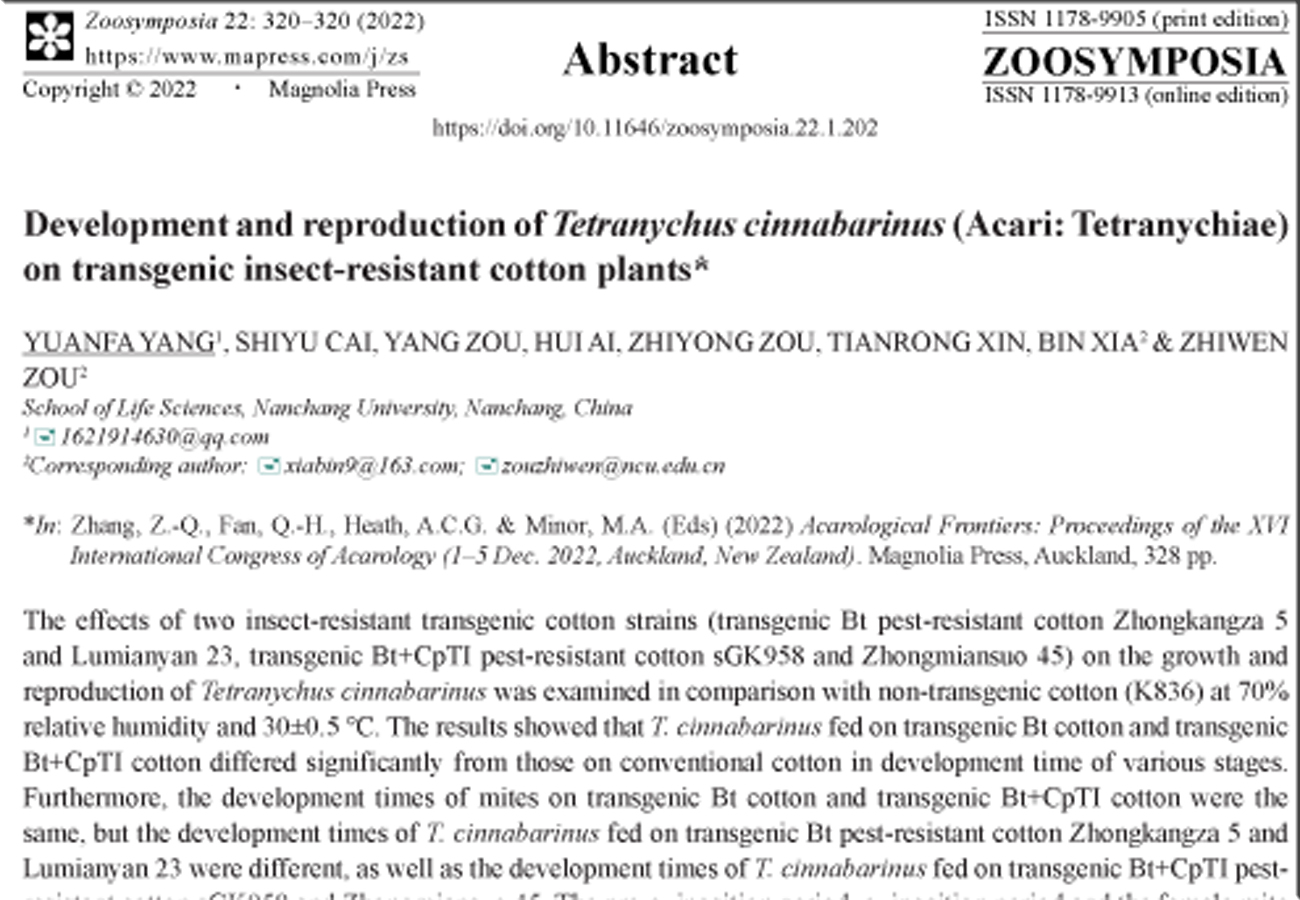Abstract
The effects of two insect-resistant transgenic cotton strains (transgenic Bt pest-resistant cotton Zhongkangza 5 and Lumianyan 23, transgenic Bt+CpTI pest-resistant cotton sGK958 and Zhongmiansuo 45) on the growth and reproduction of Tetranychus cinnabarinus was examined in comparison with non-transgenic cotton (K836) at 70% relative humidity and 30±0.5 ℃. The results showed that T. cinnabarinus fed on transgenic Bt cotton and transgenic Bt+CpTI cotton differed significantly from those on conventional cotton in development time of various stages. Furthermore, the development times of mites on transgenic Bt cotton and transgenic Bt+CpTI cotton were the same, but the development times of T. cinnabarinus fed on transgenic Bt pest-resistant cotton Zhongkangza 5 and Lumianyan 23 were different, as well as the development times of T. cinnabarinus fed on transgenic Bt+CpTI pest-resistant cotton sGK958 and Zhongmiansuo 45. The pre-oviposition period, oviposition period and the female mite life span were longer (1.44 d, 12.71 d, and 14.11 d respectively) on non-transgenic cotton than on transgenic cotton. The maximum fecundity was 75.61 eggs per female on non-transgenic cotton and the minimum fecundity (54.68 eggs per female) was observed in mites fed on sGK958. The net reproductive rate (R0) was the highest (55.000) on non-transgenic cotton, but was the smallest (37.219) on Zhongkangza 5. The intrinsic rate of increase (rm) was the highest (0.454) on non-transgenic cotton, but was the smallest (0.246) on Zhongkangza 5. The finite rate of increase (λ) was the highest (1.575) on non-transgenic cotton, but was the smallest (1.278) on Zhongkangza 5. The population doubling time (DT) was the shortest (1.526 d) on non-transgenic cotton, but was the longest (2.823 d) on Zhongkangza 5. The results of this study indicated the negative effects of transgenic cotton on the development and reproduction of T. cinnabarinus was significant: the larvae had the lowest survival rate after feeding on five kinds of cotton, while deutonymphs had the highest survival rate; the hatching rate and deutonymph survival rate of T. cinnabarinus fed on CK were the highest, while the hatching rate and larval survival rate of the sGK958 were the lowest. Transgenic insect-resistant cotton basically showed significant effects on the development period of each stage and the whole generation of T. cinnabarinus, but there were no significant differences between univalent transgenic Bt cotton and bivalent transgenic Bt+CpTI cotton.
References
-

